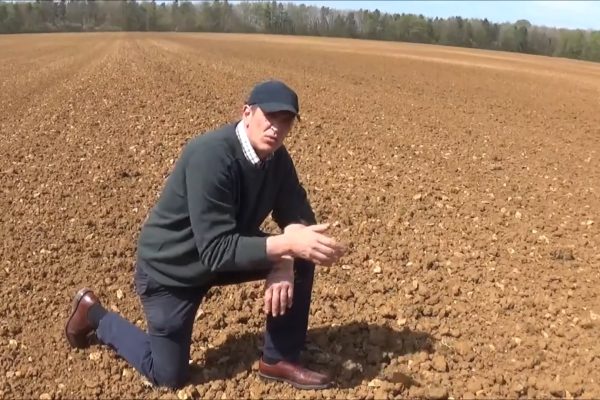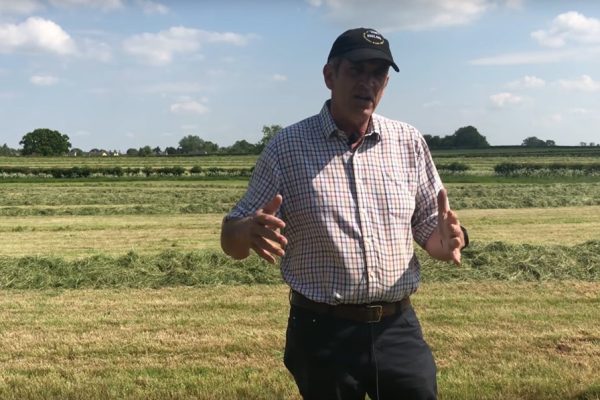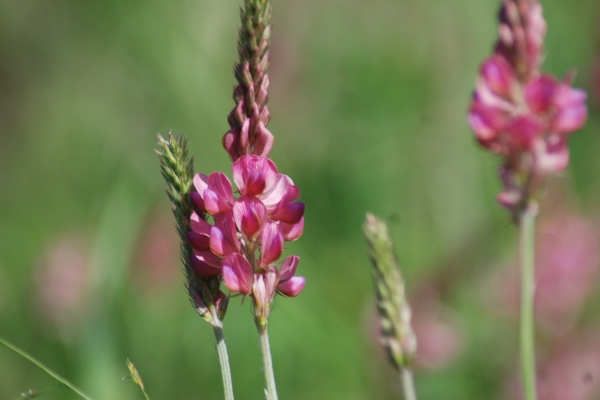Mowing sainfoin for silage
This month Richard explains the process of making sainfoin silage at Daylesford. Starting off in the field he describes how the crop has been established and how it is mown. He then moves to the silage pit and explains how they store the sainfoin.
- Planting grass within the sainfoin helps to suppress weeds in the early stages of establishment. Once the sainfoin is established, its high density suppresses weeds further.
- The pink flowers of sainfoin are highly beneficial to insect pollinators so Richard has left a strip of the crop along the top edge of the field. This is located near to some of the bee hives at Daylesford so will provide forage for the bees and other insects.
- Sainfoin grows from a root crown so must not be mown too low as this can kill the plant. Sainfoin has a fragile leaf and if it is left too long to dry and then handled with heavy machinery, it will lose a lot of the leaves. As this is where most of the goodness in the crop is, it is important to try and prevent this. At Daylesford, as soon as the sainfoin has been cut, two rows are put into one which are then ready to be picked up by the forage boxes (harvesters) the next day.
- Forage boxes are very efficient at picking up the sainfoin and the guys at Daylesford can clear about 100 acres per day. Richard hopes that the sainfoin will have a dry matter of about 30% when put into the silage pit later on that day.
- Down in the silage pit, Richard explains that the sainfoin is treated just the same as an ordinary grass silage crop. The walls of the pit are lined with plastic and the forage box chops the sainfoin and then unloads it.
- One of the key ways to make great silage in a pit is to roll it in very tightly, aiming to fill the entire pit.
- Richard will conduct an experiment with the sainfoin silage, feeding it to some of his dairy herd whilst maintaining a control group. This will allow him to see the benefits of sainfoin silage for the cattle.
The information contained above reflects the views of the author/s and does not necessarily reflect that of Agricology and its partners.
Related articles
Richard Smith (Farm Manager at Daylesford Organic Farm) gives an update on the nutritional analysis that was carried out on a juvenile sainfoin crop.
Richard Smith talks us through the establishment of his sainfoin crop at Daylesford organic farm, Gloucestershire, in this May video blog.
In our first Agricology video blog Richard Smith, the Steering Group Chairman, introduces us to the dairy herd he manages at Daylesford Organic Farm.
In this July video blog, Richard Smith gives viewers an insight into the harvesting of his sainfoin crop at Daylesford Organic Farm.
Richard Smith (Farm Manager at Daylesford Organic Farm) discusses everything sainfoin in this August video blog.
In this month's Agricology vlog, Richard Smith, Senior Farm Manager at Daylesford Organic Farm, discusses the production of grass silage in an organic system.
Practical guidance on growing and using sainfoin and potential benefits for livestock, people and pollinators, based on science and practice.
Video outlining the challenges of growing and managing sainfoin, ways it can benefit livestock and bees, and current interesting research.










